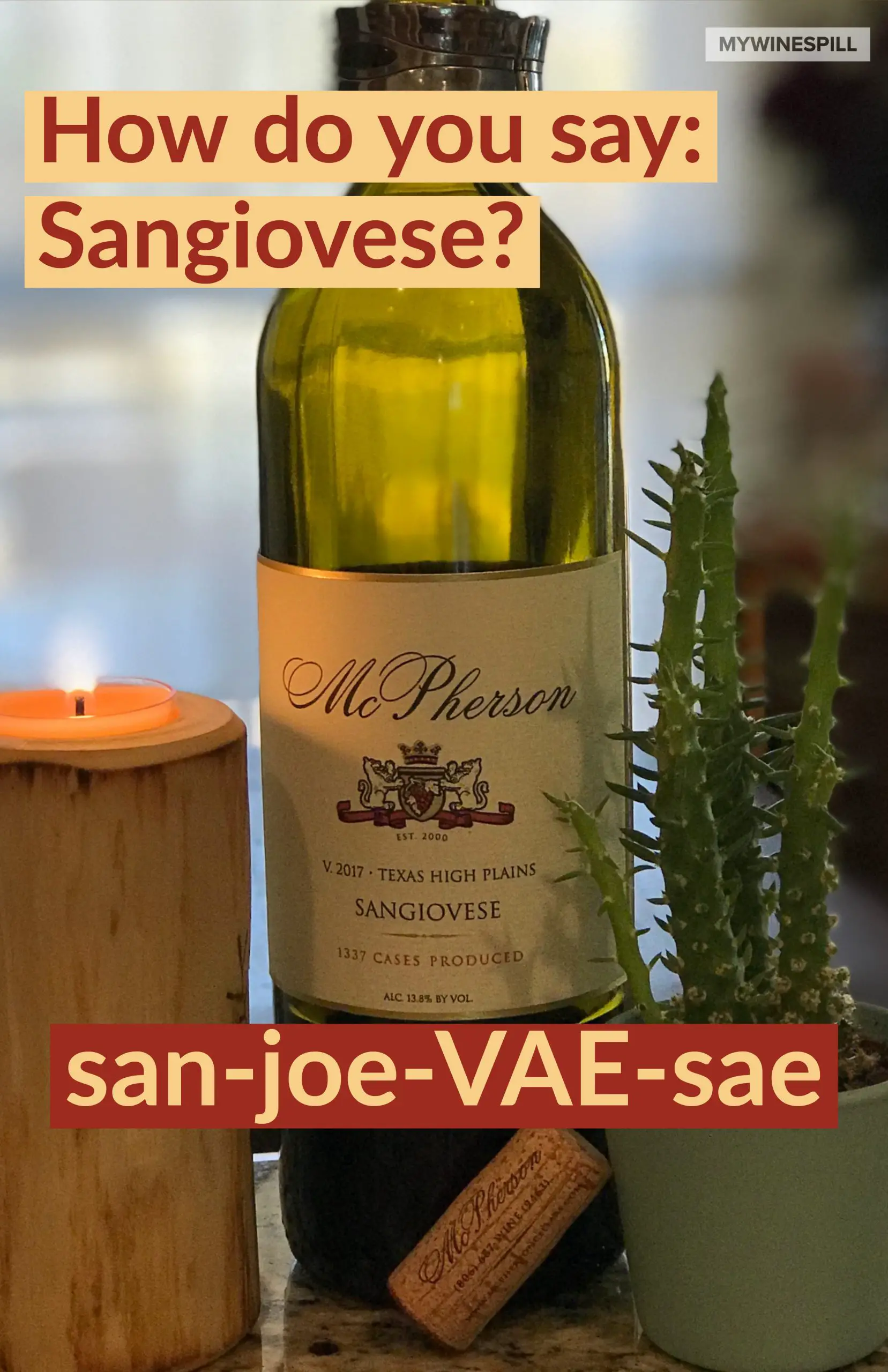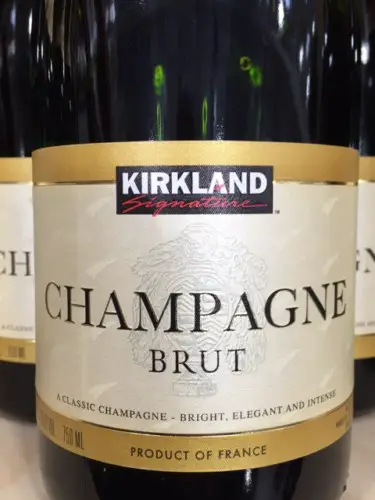
How do You Say Sangiovese?
Listen how to pronounce this Tuscan/Texan classic: San-joe-VAE-sae
[eltdf_button size=”300px” type=”outline” text=”Listen” custom_class=”” icon_pack=”font_awesome” fa_icon=”” link=”https://youtu.be/TmnJ3s6vbx4” target=”_self” color=”” hover_color=”” background_color=”” hover_background_color=”” border_color=”” hover_border_color=”” font_size=”” font_weight=”” margin=””]
Sangiovese is a revered red wine grape variety renowned for its versatility and distinctive flavor profile. Originating from Italy, Sangiovese has earned global acclaim for its role in producing some of the world’s most celebrated wines.
McPherson is a good Texas Sangiovese. Here is what they have to say about this grape variety.
Sangiovese was first planted in Texas over 25 years ago by Kim McPherson’s father, “Doc” McPherson, a founder of the modern Texas wine industry. Kim made his first Sangiovese in 1998 and it has remained his flagship wine ever since. The wine has distinctive cherry/berry aroma and flavor accented by white pepper, spice and subtle smoky vanilla from 14 months aging in French oak. It is dry and medium-bodied with balanced acidity and tannins.
mcphersoncellars.com

A Tuscan Classic Wine
Sangiovese is a Tuscan classic red Italian wine grape variety that derives its name from the Latin sanguis Jovis, “the blood of Jupiter”. The area between Florence and Siena is a major center of experimentation of Italian winemaking, and all are based on the classic Sangiovese grape. It is known for its thick skins and high acidity, which contribute to its ability to produce wines with excellent aging potential. Sangiovese grapes typically yield wines with moderate to high tannins and a vibrant acidity, making them suitable for both single-varietal wines and blends.
Growing Regions
While Sangiovese is most closely associated with Italy, it is also cultivated in other wine regions around the world. In Italy, the heartland of Sangiovese production lies in Tuscany, where it is the primary grape used in iconic wines such as Chianti, Brunello di Montalcino, and Vino Nobile di Montepulciano. Outside of Italy, Sangiovese is grown in regions such as California, Australia, Argentina, Texas and Spain, where winemakers seek to capture the essence of this beloved grape in their own terroirs.
Forget the age of the Chianti wine covered with the souvenir straw. The Chianti Classico, Sangiovese, is now mixed with a small proportion of a Cabernet Sauvignon grape. With this new blend brings the Chianti some character, you’ll find a deeper, richer, more powerful version of Chianti than the old straw-bottle days.
Flavor Profile
Sangiovese wines exhibit a wide range of flavors and aromas, influenced by factors such as terroir, winemaking techniques, and aging. In general, Sangiovese wines are known for their medium to full body, with flavors of red cherry, strawberry, plum, and floral notes. On the palate, they often display a lively acidity, balanced by soft, ripe tannins. With age, Sangiovese wines can develop additional complexity, revealing nuances of leather, tobacco, and earthy undertones, enhancing their overall depth and character.
A Food Friendly Wine
Sangiovese’s versatility makes it an excellent choice for food pairing, complementing a wide range of dishes. Sangiovese’s high acidity and moderate alcohol make it a very food-friendly wine. A traditional Italian dish is a classic pairing of tomato-based pasta and pizza sauces with a Sangiovese-based Chianti.
Sangiovese also pairs beautifully with grilled meats, roasted vegetables, and aged cheeses, providing a refreshing counterpoint to rich and savory flavors.This varietal or those with a smaller proportion of the powerful, full-bodied Cabernet blended in, can accentuate the flavors of relatively bland dishes like meatloaf and roast chicken. Herb seasoning such as basil, thyme, and sage play off the herbal notes of the grapes.
Sangiovese that has been subject to more aggressive oak treatment pairs well with grilled and smoked food. If Cabernet, Merlot or Syrah plays a dominant role, the food pairing option should treat the blend as one of those fuller-bodied reds and pair with heavier dishes such as steak and thick soups like Ribollita (a famous Tuscan bread soup) and puréed bean soup.
[eltdf_button size=”300px” type=”outline” text=”List of Texas Wineries” custom_class=”” icon_pack=”font_awesome” fa_icon=”” link=”https://mywinespill.com/list-of-texas-wineries/#complete-texas-winery-list” target=”_self” color=”” hover_color=”” background_color=”” hover_background_color=”” border_color=”” hover_border_color=”” font_size=”” font_weight=”” margin=””]
[eltdf_button size=”300px” type=”” text=”Texas Wine Trails Maps” custom_class=”” icon_pack=”font_awesome” fa_icon=”” link=”https://mywinespill.com/texas-wine-trails-maps/” target=”_self” color=”” hover_color=”#ffffff” background_color=”#383838″ hover_background_color=”#b1af6a” border_color=”#383838″ hover_border_color=”#b1af6a” font_size=”” font_weight=”” margin=””]
To conclude, Sangiovese stands as a testament to the diversity and complexity of Italian wine culture, offering wine lovers an opportunity to explore the unique terroirs and traditions of Tuscany and beyond. Whether enjoyed on its own or paired with food, Sangiovese wines showcase the rich tapestry of flavors and aromas that have made them a cherished favorite among wine enthusiasts worldwide.




